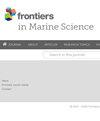印度尼西亚弗洛勒斯海地表水和海底微塑料特征和分布评估
IF 3
2区 生物学
Q1 MARINE & FRESHWATER BIOLOGY
引用次数: 0
摘要
尽管全球对微塑料的关注与日俱增,但对印尼洋流(ITF)途径(如弗洛勒斯海)中微塑料的特征和分布的研究却十分有限。弗洛勒斯海是印度洋-太平洋洋流的一个组成部分,该洋流是连接太平洋和印度洋的重要洋流系统,有能力将污染带到大型海洋生态系统中,因此这项研究极为重要。了解这一地区的微塑料污染情况有助于当地的环境管理。它还提供了有关这些洋流如何在区域和全球范围内传播微塑料 (MPs) 的见解,这些微塑料对海洋生物和人类健康的影响远远超出了附近区域。为回应这些关切,本研究旨在确定弗洛勒斯海六个研究地点的微塑料特征和分布情况,这些地点均精确位于 ITF 范围内。这项工作展示了一个广泛的数据集,重点关注弗洛勒斯海中微塑料的出现、属性和散布情况。水样采集是在 2023 年 4 月至 5 月印度尼西亚海军 Jala Citra 3 号航行期间进行的。海面水样是用 Neuston 网采集的,而沉积物样品则是用 Ekman Grab 采样器从最浅的三个站点采集的。此外,还使用光学显微镜进行了丰度、大小、形状和颜色分析,并通过拉曼光谱鉴定了微塑料类型。结果表明,弗洛勒斯海水域和沉积物受到了微塑料的污染,相对丰度从 0.75 ± 0.49 到 2.13 ± 0.25 项/升不等。所发现的最主要形状是丝状(77.45%)和碎片状(13.40%),尺寸从表层海水的 4.70 微米到 3799.25 微米不等,海床的尺寸从 67.20 毫米到 2176.87 毫米不等,黑色(30.07%)和蓝色(24.51%)是常见的微塑料颜色。已确定的聚合物包括 PET 和 PE。这项研究证实了印度尼西亚东部开放水域存在微塑料的直观证据。虽然它可能无法完全捕捉到广泛的时间变化,但它确定了微塑料的初步存在和分散水平。鉴于 ITF 对太平洋和印度洋都有影响,这项研究有助于全球了解微塑料在各大洋盆地的分布情况,强调了国际社会协调努力解决海洋污染问题的必要性。本文章由计算机程序翻译,如有差异,请以英文原文为准。
Assessment of microplastic characterization and distribution from surface water and the seabed in the Flores Sea, Indonesia
Despite growing global concerns, there has been limited research on the characterization and distribution of microplastics in the Indonesian Throughflow (ITF) pathways, such as the Flores Sea. The Flores Sea is a component of the Indian–Pacific Current, a significant ocean current system that links the Pacific and Indian oceans and has the capacity to carry pollution over large marine ecosystems, making this research extremely important. Understanding the microplastic pollution in this area informs local environmental management. It provides insights into how these currents may distribute microplastics (MPs) across regional and global scales, impacting marine life and human health far beyond the immediate area. To respond to these concerns, this research aims to determine the characterization and distribution of MPs at six research sites in the Flores Sea that are precisely located within the ITF. This work exhibits an extensive dataset focusing on the occurrence, attributes, and dispersion of microplastics in the Flores Sea. The water sampling was carried out during a Jala Citra 3 by the Indonesian Navy from April to May 2023. Sea surface water samples were collected using a Neuston net, while sediment samples were taken from three stations at the shallowest depth using the Ekman Grab sampler. Additionally, abundance, size, shape, and color analyses were conducted using a light microscope, and microplastic types were identified through Raman spectroscopy. The results indicated that the Flores Sea waters and sediment are polluted with microplastics, with relative abundances ranging from 0.75 ± 0.49 to 2.13 ± 0.25 items/l samples. The most dominant shapes identified were filament (77.45%) and fragment (13.40%), with sizes varying between surface water 4.70 to 3799.25 μm and seabed from 67.20 mm to 2176.87 mm, while black (30.07%) and blue (24.51%) were reported as the common MPs colors. The identified polymers include PET and PE. This study confirms visual evidence of microplastics in the open waters of eastern Indonesia. While it may not fully capture the wide range of temporal variations, it establishes initial microplastic presence and dispersion levels. Given that the ITF influences both the Pacific and Indian Oceans, this research contributes to the global understanding of microplastic distribution across ocean basins, underscoring the need for coordinated international efforts to address marine pollution.
求助全文
通过发布文献求助,成功后即可免费获取论文全文。
去求助
来源期刊

Frontiers in Marine Science
Agricultural and Biological Sciences-Aquatic Science
CiteScore
5.10
自引率
16.20%
发文量
2443
审稿时长
14 weeks
期刊介绍:
Frontiers in Marine Science publishes rigorously peer-reviewed research that advances our understanding of all aspects of the environment, biology, ecosystem functioning and human interactions with the oceans. Field Chief Editor Carlos M. Duarte at King Abdullah University of Science and Technology Thuwal is supported by an outstanding Editorial Board of international researchers. This multidisciplinary open-access journal is at the forefront of disseminating and communicating scientific knowledge and impactful discoveries to researchers, academics, policy makers and the public worldwide.
With the human population predicted to reach 9 billion people by 2050, it is clear that traditional land resources will not suffice to meet the demand for food or energy, required to support high-quality livelihoods. As a result, the oceans are emerging as a source of untapped assets, with new innovative industries, such as aquaculture, marine biotechnology, marine energy and deep-sea mining growing rapidly under a new era characterized by rapid growth of a blue, ocean-based economy. The sustainability of the blue economy is closely dependent on our knowledge about how to mitigate the impacts of the multiple pressures on the ocean ecosystem associated with the increased scale and diversification of industry operations in the ocean and global human pressures on the environment. Therefore, Frontiers in Marine Science particularly welcomes the communication of research outcomes addressing ocean-based solutions for the emerging challenges, including improved forecasting and observational capacities, understanding biodiversity and ecosystem problems, locally and globally, effective management strategies to maintain ocean health, and an improved capacity to sustainably derive resources from the oceans.
 求助内容:
求助内容: 应助结果提醒方式:
应助结果提醒方式:


